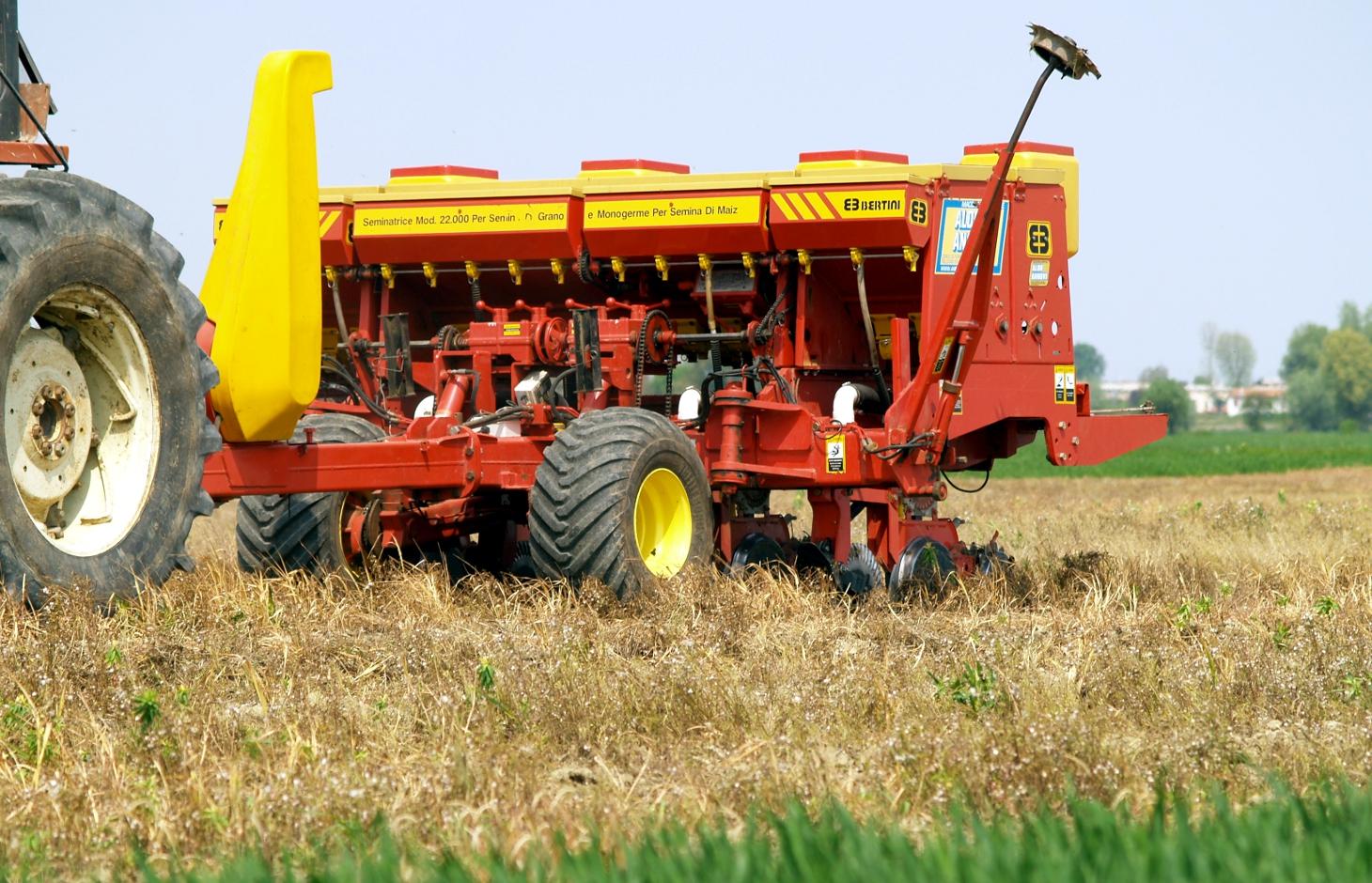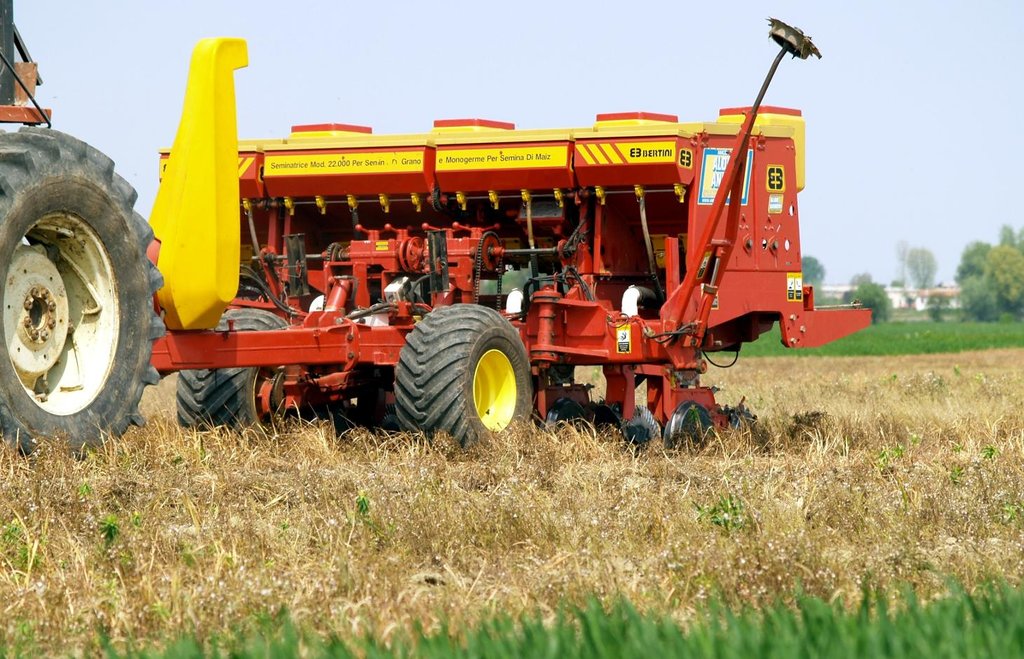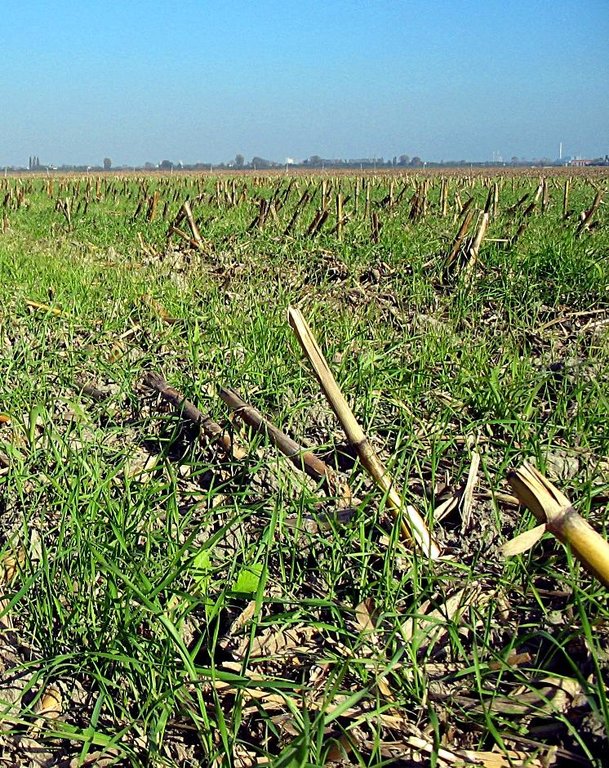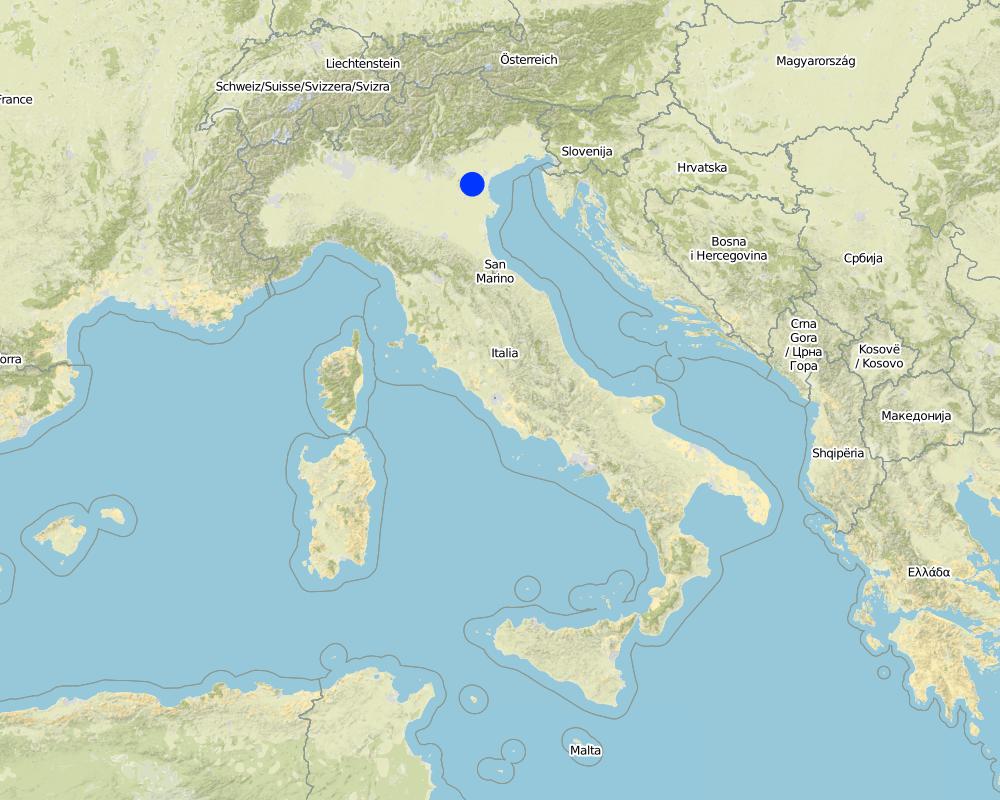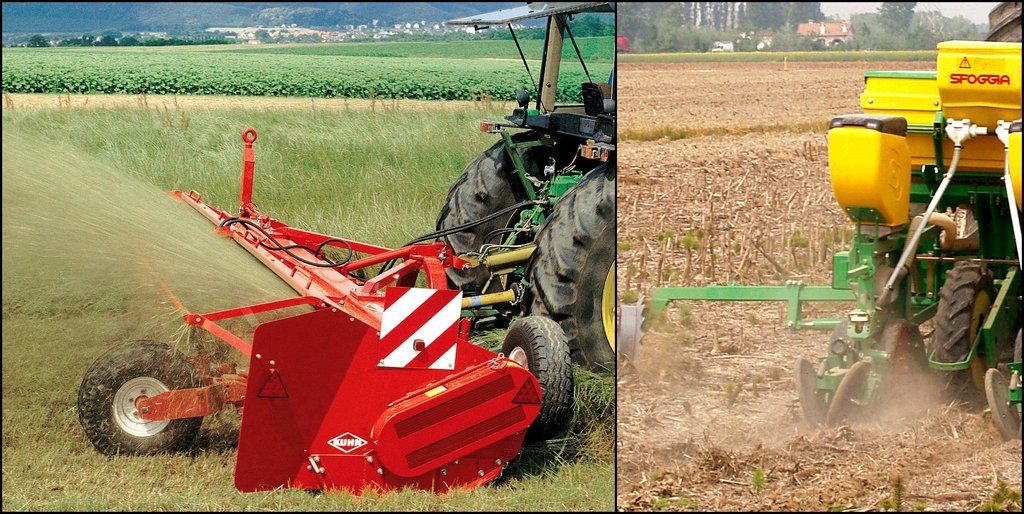Conservation agriculture [إيطاليا]
- تاريخ الإنشاء:
- تحديث:
- جامع المعلومات: Nicola Dal Ferro
- المحرر: –
- المراجعون: Fabian Ottiger, Alexandra Gavilano
Agricoltura conservativa
technologies_1225 - إيطاليا
عرض الأقسام
توسيع الكل طي الكل1. معلومات عامة
1.2 تفاصيل الاتصال بالأشخاص الرئيسيين لمصدر المعلومات والمؤسسات المشاركة في تقييم وتوثيق التقنية
متخصص في الإدارة المستدامة للأراضي:
Morari Francesco
University of Padova
إيطاليا
اسم المشروع الذي سهّل توثيق/تقييم التقنية (إذا كان ذلك على صلة)
Preventing and Remediating degradation of soils in Europe through Land Care (EU-RECARE )اسم المؤسسة (المؤسسات) التي سهلت توثيق/تقييم التقنية (إذا كان ذلك على صلة)
University of Padova (UNIPD) - إيطاليا1.3 الشروط المتعلقة باستخدام البيانات الموثقة من خلال WOCAT
يوافق جامع المعلومات والشخص (لاشخاص) الرئيسي لمصدر المعلومات على الشروط المتعلقة باستخدام البيانات الموثقة من خلال WOCAT:
نعم
1.5 الإشارة إلى الاستبيان (الاستبيانات) حول مناهج الإدارة المستدامة للأراضي (موثقة باستخدام WOCAT)
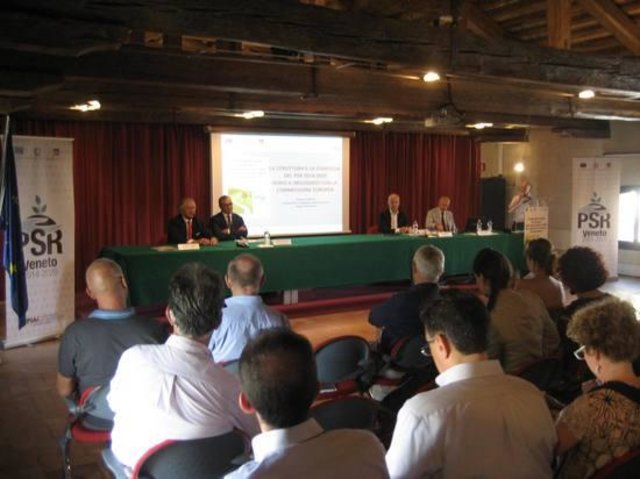
Rural development programme in the Veneto region [إيطاليا]
Developing rural areas in the Veneto region through sustainable land management policies
- جامع المعلومات: Nicola Dal Ferro
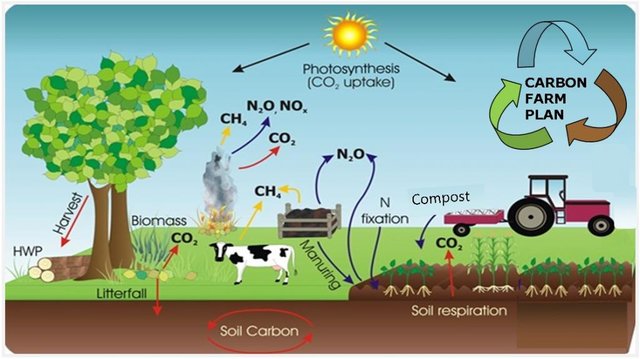
Carbon farming [إيطاليا]
Managing land, water, plants and animals to meet the landscape restoration, climate change and food security.
- جامع المعلومات: Nicola Dal Ferro
2. وصف تقنيةالإدارة المستدامي للأراضي
2.1 وصف مختصر للتقنية
تعريف التقنية:
Sustainable crop production and residue management under no-tillage to improve soil fertility and increase environmental benefits
2.2 وصف تفصيلي للتقنية
الوصف:
Conservation agriculture (CA) in the Veneto region is characterised by management systems including no-tillage, permanent soil cover and crop rotation. CA has been promoted as an agri-environmental measure of the Rural Development Programme (RDP) by the Veneto region to extend sustainable land management. In spite of being provided by the regional government with subsidies, so far the adoption of CA by the farmers has been very limited since its introduction, amounting less than 1% (ca. 2000 ha) of the total regional cropland area (mainly concentrated in the low Venetian plain).
Purpose of the Technology: CA has been proposed to the farmers with the aim of reducing environmental impacts as well as economic and energetic inputs to the agricultural system. Compared with conventional practices such as soil ploughing, CA is convenient due to the saving of labour and fuel costs, with a direct effect in reducing CO2 emissions into the atmosphere. Limiting the soil disturbance and guaranteeing the continuous soil cover involve both a reduction of water runoff and surface erosion and an increase of soil biodiversity and fertility.
Establishment / maintenance activities and inputs: The main winter crops usually cultivated in the low Venetian plain are wheat, rapeseed and barley, while summer season crops are maize, soybean, sorghum. Generally CA consists of direct sowing on untilled soil using a double-disk opener planter for seed deposition, while after harvesting crop residues are chopped and dispersed to the surface in order to guarantee a mulching effect and a rapid incorporation into the soil. Since application of CA practices consider the permanent soil cover, the main crop is followed by cover crops that are usually graminaceae or brassicaceae. Cover crops are neither fertilized nor treated with pesticides during growing, while their final devitalisation is achieved with non-specific herbicides (e.g. Glyphosate, Glufosinate Ammonium).
Natural / human environment: Advantages of adopting conservation agriculture have been widely demonstrated worldwide and can be classified in economic, agronomic and environmental benefits. From an environmental point of view, the soil system preserves its structure and biodiversity thanks to minimum soil disturbance to the root zone, microorganisms, fungi and macroinvertebrates. Greenhouse gas emissions under conservation agriculture compared to traditional cultivation systems are lower and might offset the gains obtained to mitigate global warming. Due to the recent introduction of the technology in the Veneto region (since mid-2000s), conservation agriculture has shown contrasting results in terms of crop yield since still in a transition period between conventional and conservation agriculture practices.
2.3 صور التقنية
2.5 البلد/المنطقة/المواقع التي تم تنفيذ التقنية فيها والتي يغطيها هذا التقييم
البلد:
إيطاليا
المنطقة/الولاية/المحافظة:
Italy
مزيد من التفاصيل حول الموقع:
Low Venetian plain of Veneto region
حدد انتشار التقنية:
- منتشرة بالتساوي على مساحة
إذا كانت المساحة الدقيقة غير معروفة، فيرجى الإشارة إلى المنطقة التقريبية المغطاة:
- 100-10 كم2
Map
×2.6 تاريخ التنفيذ
في حالة عدم معرفة السنة بالتحديد، يرجى الإشارة إلى التاريخ التقريبي:
- منذ 10-50 سنة
2.7 إدخال التقنية
حدد كيف تم إدخال التقنية:
- أثناء التجارب/الأبحاث
3. تصنيف تقنية الإدارة المستدامي للأراضي
3.1 الغرض الرئيسي ( الأغراض الرئيسية) للتقنية
- الحد من تدهور الأراضي ومنعه وعكسه
3.2 نوع (أنواع) استخدام الأراضي الحالية حيث يتم تطبيق التقنية

الأراضي الزراعية
- زراعة سنوية
الزراعة السنوية - حدد المحاصيل:
- الحبوب - الشعير
- الحبوب - الذرة
- الحبوب - الذرة الرفيعة
- الحبوب - قمح (شتوي)
- الحبوب البقولية والبقول -فول الصويا
- المحاصيل الزيتية - عباد الشمس، بذور اللفت، وغيرها
عدد مواسم الزراعة في السنة:
- 1
حدد:
Longest growing period in days: 210 Longest growing period from month to month: March to OctoberSecond longest growing period in days: 180Second longest growing period from month to month: April to September
التعليقات:
The main winter crops usually cultivated in the low Venetian plain are wheat, rapeseed and barley, while summer season crops are maize, soybean, sorghum.
Major land use problems (compiler’s opinion): Soils in the low Venetian plain of the Veneto region generally suffer from a loss of soil organic matter (SOM) that is strongly affected by their natural texture and climatic conditions. Moreover, in the last 50 years intensive tillage practices contributed to a further SOM decrease, estimated at 0.02-0.58 t/ha/y of carbon.
Major land use problems (land users’ perception): Decrease of productivity, soil compaction. To date, few farmers have adopted voluntarily conservation practices to reduce a decline of soil fertility and SOM content, symptom of poor perception of the problem. Moreover, the low technical know-how causes low yield performances and discouraged farmers to adopt the SLM technology.
3.4 إمدادات المياه
إمدادات المياه للأرض التي يتم تنفيذ التقنية عليها:
- مختلط بعلي-مروي
التعليقات:
Water supply: Also rainfed, full irrigation
3.5 مجموعةالإدارة المستدامة للأراضي التي تنتمي إليها هذه التقنية
- تحسين الغطاء الأرضي/النباتي
- الحد الأدنى من اختلال التربة
3.6 التدابير التقنية في مجال إلادارة المستدامة للأراضي

التدابير الزراعية
- A1: الغطاء النباتي/التربة
- A3: معالجة سطح التربة

التدابير الإدارية
- M2: تغيير في مستوى الإدارة/الكثافة
التعليقات:
Main measures: agronomic measures
Secondary measures: management measures
Type of agronomic measures: cover cropping, mulching, zero tillage / no-till
3.7 الأنواع الرئيسية من تدهور الأراضي التي تناولتها التقنية

التدهور الكيميائي للتربة
- (Cn): تراجع الخصوبة وانخفاض محتوى المادة العضوية (غير ناتج عن الانجراف)

التدهور البيولوجي
- (Bc): تناقص الغطاء النباتي
- (Bl): فقدان الحياة بالتربة
التعليقات:
Main type of degradation addressed: Cn: fertility decline and reduced organic matter content, Bc: reduction of vegetation cover, Bl: loss of soil life
Main causes of degradation: soil management (lack of organic input with fertilizations), population pressure (High demand for agricultural products and competition for land in densely populated area)
Secondary causes of degradation: crop management (annual, perennial, tree/shrub) (crop monoculture instead of crop rotation)
3.8 منع أو حد أو عكس تدهور الأراضي
تحديد هدف التقنية فيما يتعلق بتدهور الأراضي:
- منع تدهور الأراضي
- الحد من تدهور الأراضي
التعليقات:
Main goals: prevention of land degradation
Secondary goals: mitigation / reduction of land degradation
4. المواصفات الفنية، وأنشطة التنفيذ، والمدخلات، والتكاليف
4.1 الرسم الفني للتقنية
المواصفات الفنية (المتعلقة بالرسم الفني):
Detailed view of direct sowing on untilled soil and chopping of crop residues
Location: Low Venetian plain of Veneto region
Technical knowledge required for field staff / advisors: high
Technical knowledge required for land users: moderate
Main technical functions: control of raindrop splash, control of dispersed runoff: impede / retard, improvement of ground cover, improvement of topsoil structure (compaction), increase in organic matter
Secondary technical functions: control of concentrated runoff: impede / retard, increase of surface roughness, increase of infiltration, increase / maintain water stored in soil
Cover cropping
Material/ species: e.g. barley and vetch, lolium, sorghum
Mulching
Material/ species: Residues depending on the main crop
Change of land use practices / intensity level: With conservation agriculture labour is saved and fuel cost lowered. Additional application of pesticides represents an extra expenditure.
المؤلف:
Luigi Sartori
4.2 معلومات عامة بخصوص حساب المدخلات والتكاليف
عملة أخرى/ عملة وطنية (حدد):
Euro €
إذا كان ذا صلة، وضح سعر الصرف من الدولار الأمريكي إلى العملة المحلية (على سبيل المثال، 1 دولار أمريكي = 79.9 ريال برازيلي): 1 دولار أمريكي =:
0,8
اذكر متوسط تكلفة أجر العمالة المستأجرة في اليوم الواحد:
110.00
4.5 الصيانة/الأنشطة المتكررة
| النشاط | التوقيت/الوتيرة | |
|---|---|---|
| 1. | Weed control and cover crops devitalisation | each crop season |
| 2. | Main crop: direct sowing on untilled soil | each crop season |
| 3. | Main crop: fertilisation | each crop season |
| 4. | Main crop: combined harvesting and chopping of straw | each crop season |
| 5. | Cover crops: sowing | each crop season |
4.6 التكاليف والمدخلات اللازمة للصيانة/للأنشطة المتكررة (سنويًا)
| تحديد المدخلات | الوحدة | الكمية | التكاليف لكل وحدة | إجمالي التكاليف لكل مدخل | % من التكاليف التي يتحملها مستخدمو الأراضي | |
|---|---|---|---|---|---|---|
| العمالة | Weed control and cover crops devitalisation | L/ha | 1,0 | 130,0 | 130,0 | |
| العمالة | Cover crops: sowing | ha | 1,0 | 254,0 | 254,0 | |
| معدات | Weed control and cover crops devitalisation | ha | 1,0 | 44,5 | 44,5 | |
| معدات | Main crop: direct sowing on untilled soil | ha | 1,0 | 63,5 | 63,5 | |
| معدات | Main crop: combined harvesting and chopping of straw | ha | 1,0 | 190,5 | 190,5 | |
| المواد النباتية | Seeds | ha | 1,0 | 190,5 | 190,5 | |
| الأسمدة والمبيدات الحيوية | Fertilisation | ha | 1,0 | 287,0 | 287,0 | |
| إجمالي تكاليف صيانة التقنية | 1160,0 | |||||
| إجمالي تكاليف صيانة التقنية بالدولار الأمريكي | 1450,0 | |||||
4.7 أهم العوامل المؤثرة على التكاليف
قدم وصفا لأهم العوامل التي تؤثر على التكاليف:
Costs are mostly affected by field labours, although they are considerably lower than under conventional tillage practices. They do not include initial investments since usually farmers to rely on agricultural contractors. As a result, intial investements are borne by agricultural contractors (e.g. sod seeding machinery, which costs 35000$, on average).
5. البيئة الطبيعية والبشرية
5.1 المناخ
هطول الأمطار السنوي
- < 250 مم
- 251- 500 ملم
- 501 - 750ملم
- 1,000-751 ملم
- 1,500-1,100 ملم
- 2,000-1,500 ملم
- 3,000-2,001 ملم
- 4,000-3,100 ملم
- > 4000 ملم
حدد متوسط هطول الأمطار السنوي (إذا كان معروفًا)، بالملليمتر:
850,00
المواصفات/التعليقات على هطول الأمطار:
Max in June (100 mm) and minima in winter (55 mm, December to February)
المنطقة المناخية الزراعية
- شبه رطبة
Thermal climate class: temperate (the low Venetian plain where the technology is applied has continental climate)
5.2 طوبوغرافيا
متوسط الانحدارات:
- مسطح (0-2%)
- بسيط (3-5%)
- معتدل (6-10%)
- متدحرج (11-15%)
- تلال (16-30%)
- شديدة الانحدار(31-60%)
- فائقة الانحدار (>60%)
التضاريس:
- هضاب/سهول
- أثلام مرتفعة
- المنحدرات الجبلية
- منحدرات التلال
- منحدرات في السفوح
- قاع الوادي
المنطقة الارتفاعية:
- 100-0 متر فوق سطح البحر
- 500-101 متر فوق سطح البحر
- 1,000-501 متر فوق سطح البحر
- 1,500-1,001 متر فوق سطح البحر
- 2,000-1,501 متر فوق سطح البحر
- 2,500-2,100 متر فوق سطح البحر
- 3,000-2,501 متر فوق سطح البحر
- 4,000-3,001 متر فوق سطح البحر
- > 4000 متر فوق سطح البحر
التعليقات والمواصفات الإضافية بشأن التضاريس:
Altitudinal zone: 0-100 m a.s.l. (the low Venetian does not exceed 50 m above sea level)
5.3 التربة
متوسط عمق التربة:
- ضحل جدًا (0-20 سم)
- ضحلة (21-50 سم)
- متوسطة العمق (51-80 سم)
- عميقة (81-120 سم)
- عميقة جدًا (> 120 سم)
قوام التربة (التربة السطحية):
- خشن / خفيف (رملي)
- متوسط ( طميي، سلتي)
المواد العضوية في التربة السطحية:
- متوسطة (1-3%)
- منخفضة (<1%)
إذا كان متاحًا، قم بإرفاق وصف كامل للتربة أو تحديد المعلومات المتوفرة، على سبيل المثال نوع التربة، الرقم الهيدروجيني/ درجة حموضة التربة، قدرة التبادل الكاتيوني، النيتروجين، الملوحة وما إلى ذلك.
Soil fertility is low-medium
Soil drainage/infiltration is medium
Soil water storage capacity is medium
5.4 توافر المياه ونوعيتها
منسوب المياه الجوفية:
< 5 م
توافر المياه السطحية:
جيد
نوعية المياه (غير المعالجة):
مياه شرب جيدة
تعليقات ومواصفات أخرى بشأن نوعية المياه وكميتها:
Ground water table: <5m (The area surrounding the Venice lagoon (1240 km2) is even below the sea level (down to -2 m) and currently cultivated due to land reclamation. As a result water table is kept artificially low)
Water quality (untreated) is good drinking water (groundwater) or for agricultural use only (irrigation: Surface water can be used for agricultural purposes but not as drinking water)
5.5 التنوع البيولوجي
تنوع الأنواع:
- متوسط
التعليقات والمواصفات الإضافية بشأن التنوع البيولوجي:
High population density, infrastructures and intensive agriculture practices affect the state of biodiversity.
5.6 خصائص مستخدمي الأراضي الذين يطبقون التقنية
التوجه السوقي لنظام الإنتاج:
- تجاري/سوق
الدخل من خارج المزرعة:
- أقل من % 10من كامل الدخل
المستوى النسبي للثروة:
- متوسط
- ثري
أفراداً أو مجموعات:
- فرد/أسرة معيشية
مستوى المكننة:
- ميكانيكية/ مزودة بمحرك
الجنس:
- رجال
اذكر الخصائص الأخرى ذات الصلة لمستخدمي الأراضي:
Land users applying the Technology are mainly common / average land users
Difference in the involvement of women and men: Farmers in the Veneto region are traditionally males due to historical and cultural reasons.
Population density: 200-500 persons/km2
Annual population growth: 0.5% - 1%
Off-farm income specification: The conservation measure is applied by farmers whose main income is from agriculture activity.
5.7 متوسط مساحة الأرض التي يستخدمها مستخدمو الأراضي الذين يطبقون التقنية
- < 0.5 هكتارا
- 0.5 - 1 هكتار
- 1 -2 هكتار
- 2 - 5 هكتار
- 5 - 15 هكتار
- 15 - 50 هكتار
- 50 - 100هكتار
- 500-100 هكتار
- 1,000-500 هكتار
- 10,000-1,000 هكتار
- > 10,000 هكتار
هل يعتبر هذا نطاقًا صغيرًا أو متوسطًا أو واسعا (في إشارة إلى السياق المحلي)؟:
- على نطاق واسع
5.8 ملكية الأراضي، وحقوق استخدام الأراضي، وحقوق استخدام المياه
ملكية الارض:
- فردية، لا يوجد سند ملكية
حقوق استخدام الأراضي:
- مؤجر
- فردي
حقوق استخدام المياه:
- مجتمعي (منظم)
- مؤجر
5.9 الوصول إلى الخدمات والبنية التحتية
الصحة:
- ضعيف
- معتدل
- جيد
التعليم:
- ضعيف
- معتدل
- جيد
المساعدة التقنية:
- ضعيف
- معتدل
- جيد
العمل (على سبيل المثال خارج المزرعة):
- ضعيف
- معتدل
- جيد
الأسواق:
- ضعيف
- معتدل
- جيد
الطاقة:
- ضعيف
- معتدل
- جيد
الطرق والنقل:
- ضعيف
- معتدل
- جيد
مياه الشرب وخدمات الصرف الصحي:
- ضعيف
- معتدل
- جيد
الخدمات المالية:
- ضعيف
- معتدل
- جيد
6. الآثار والتصريحات الختامية
6.1 الآثار التي أظهرتها التقنية في الموقع
الآثار الاجتماعية والاقتصادية
الإنتاج
إنتاج المحاصيل
التعليقات/ حدد:
In the early years
الدخل والتكاليف
النفقات على المدخلات الزراعية
عبء العمل
الآثار الاجتماعية والثقافية
المعرفة بالإدارة المستدامة للأراضي/تدهور الأراضي
Improved livelihoods and human well-being
الآثار الايكولوجية
دورة المياه / الجريان السطحي
الجريان السطحي
تصريف المياه الزائدة
التبخر
التربة
غطاء التربة
فقدان التربة
تكون قشرة التربة السطحية/انسداد مسام التربة
تراص التربة
التنوع البيولوجي: الغطاء النباتي، الحيوانات
تنوع الموائل
مكافحة الآفات/الأمراض
التعليقات/ حدد:
Increased reliance on herbicides
6.3 تعرض التقنية وحساسيتها لتغير المناخ التدريجي والظواهر المتطرفة/الكوارث المرتبطة بالمناخ (كما يراها مستخدمو الأراضي)
تغير مناخ تدريجي
تغير مناخ تدريجي
| الموسم | زيادة أو نقصان | كيف تتعامل التقنية مع ذلك؟ | |
|---|---|---|---|
| درجة الحرارة السنوية | زيادة | جيدا |
الظواهر المتطرفة / الكوارث المرتبطة بالمناخ
الكوارث الجوية
| كيف تتعامل التقنية مع ذلك؟ | |
|---|---|
| عاصفة ممطرة محلية | جيدا |
العواقب الأخرى المتعلقة بالمناخ
العواقب الأخرى المتعلقة بالمناخ
| كيف تتعامل التقنية مع ذلك؟ | |
|---|---|
| انخفاض فترة النمو | جيدا |
6.4 تحليل التكلفة والعائد
كيف يمكن مقارنة العوائد نسبة لتكاليف الإنشاء (من وجهة نظر مستخدمي الأراضي)؟
عوائد قصيرة الأجل:
سلبي
عوائد طويلة الأجل:
إيجابي قليلا
كيف تتم مقارنة العوائدمع كلفة الصيانة/التكاليف المتكررة (من وجهة نظر مستخدمي الأراضي)؟
عوائد قصيرة الأجل:
محايد/متوازن
عوائد طويلة الأجل:
إيجابي
6.5 اعتماد التقنية
التعليقات:
100% of land user families have adopted the Technology with external material support
There is a little trend towards spontaneous adoption of the Technology
6.7 نقاط القوة / المزايا / الفرص التي توفرها التقنية
| نقاط القوة/ المزايا/ الفرص من وجهة نظر جامع المعلومات أو غيره من الاشخاص الرئيسيين لمصدر المعلومات |
|---|
|
Lowers soil tillage costs due to a reduction of fuel consumption and labour How can they be sustained / enhanced? Spread over greater areas to maximise cost reduction |
|
Lowers CO2 emissions due to a general reduction of energy inputs How can they be sustained / enhanced? Identification of CA as an agricultural practice to mitigate global warming. Spread over greater areas to increase effectiveness |
|
Reduces water runoff and erosion while increasing soil coverage and biodiversity How can they be sustained / enhanced? Further improvement of soil quality might consider organic fertilizations |
|
Enhances in general the sustainability of cropping systems How can they be sustained / enhanced? Maintain conservation agriculture system in the long-term to maximise benefits |
6.8 نقاط ضعف / مساوىء / مخاطر التقنية وسبل التغلب عليها
| نقاط الضعف/ المساوىء/ المخاطر من وجهة نظر جامع المعلومات أو غيره من الاشخاص الرئيسيين لمصدر المعلومات | كيف يمكن التغلب عليها؟ |
|---|---|
| Soil compaction is sometimes emerging | Periodic decompaction and adoption of lighter machinery |
| Crop productions are sometimes lower than with conventional practices | Stabilize conservation agriculture in the long-term. Support farmers in technical choices |
7. المراجع والروابط
7.1 طرق جمع/مصادر المعلومات
7.2 المراجع للمنشورات المتاحة
العنوان، المؤلف، السنة، النظام القياسي الدولي لترقيم الكتب ISBN:
Programma di sviluppo rurale per il veneto 2007-2013, Regione Veneto, 2007. Dipartimento Agricoltura e Sviluppo Rurale.
الروابط والوحدات المواضيعية
توسيع الكل طي الكلالروابط

Rural development programme in the Veneto region [إيطاليا]
Developing rural areas in the Veneto region through sustainable land management policies
- جامع المعلومات: Nicola Dal Ferro

Carbon farming [إيطاليا]
Managing land, water, plants and animals to meet the landscape restoration, climate change and food security.
- جامع المعلومات: Nicola Dal Ferro
الوحدات المواضيعية
لا يوجد وحدات مواضيعية


